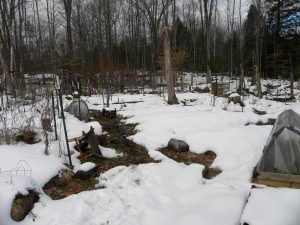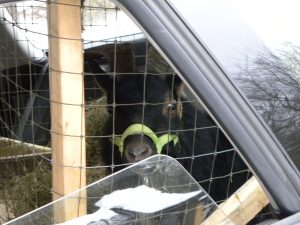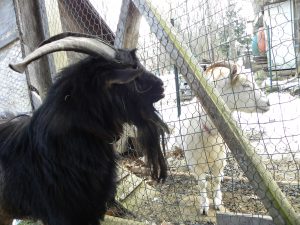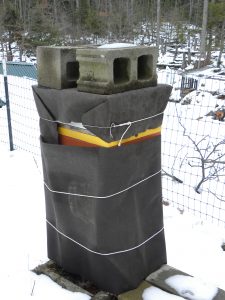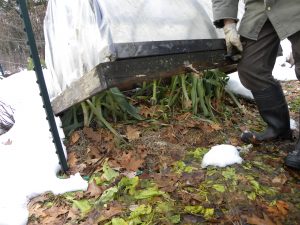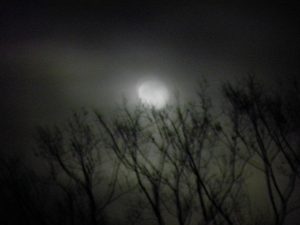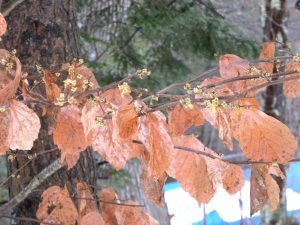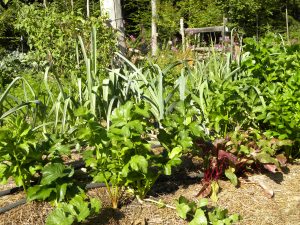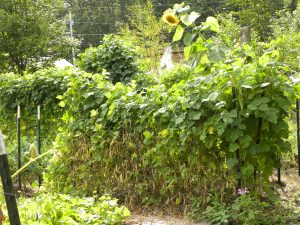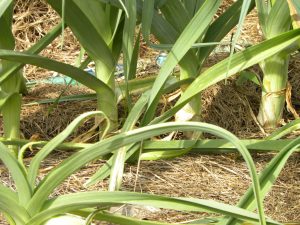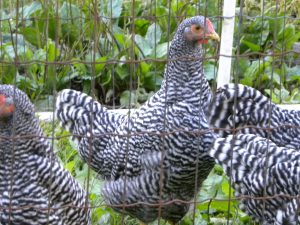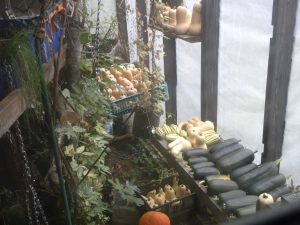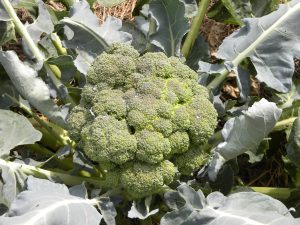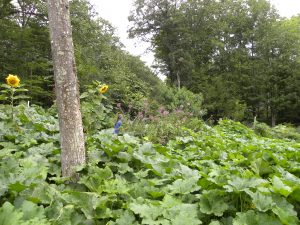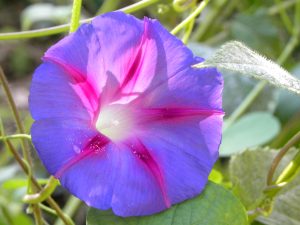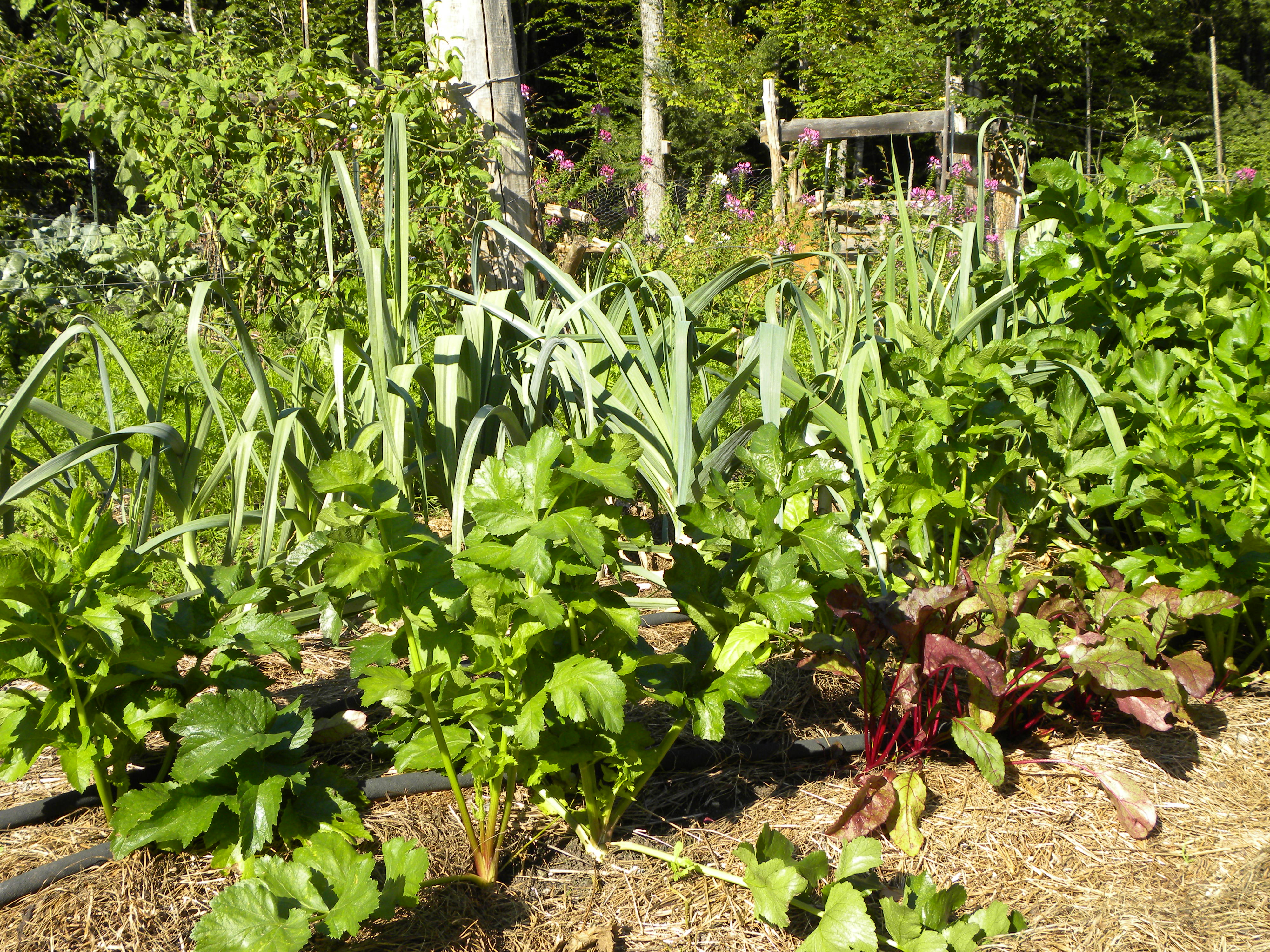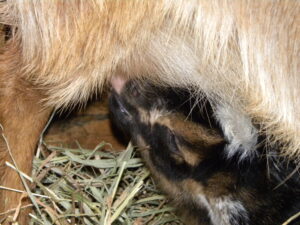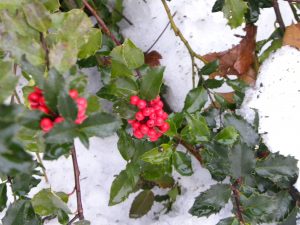
Holly Berries Brighten December’s Dark Days
December in the north… the natural world is quiet, dark, cold. Meanwhile, we humans whip up a frenzy of activity! Would we be better off letting go of our plans and our plans and resting, too? Or maybe we need all the excitement we generate to distract us from a primeval fear that the sun won’t return this time? I don’t know, but for us this year, our home lives were quieter while I spent more time out joining in activities, some of which did feel like they were making my world brighter.
Our Work in December
Outside
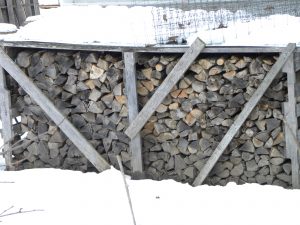
Thanks to the trees whose wood will keep us warm.
Here on the homestead where we are tied in to the seasons, we didn’t have a lot to do outside. We had two days when the snow melted enough and conditions weren’t too harsh that allowed us to nearly catch up on splitting and stacking wood.
Animal care chores of feeding, watering, milking and door and gate duty were as always. We also continued to give attention and thought to goat breeding. November’s pairings didn’t end up with pregnant goats. So, I gave up on trying to hit the exact right moment and just put Honey and Luna with Marley and Cocoa with Pan for most of the month. I don’t love doing this because the does seem unhappy not being together, and they get stinky living with the boys. Milking a stinky goat is less fun! But, I think it was more effective. This means I’m expecting May births again, rather than my preferred April. Well… next fall will be another chance to work on my timing.
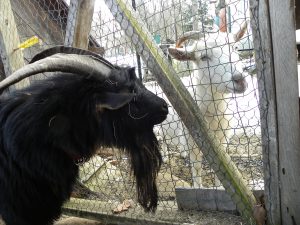
Goat Romance
I reshuffled the goats Christmas Eve, putting all the girls back together and integrating the boys. The bucks, Pan and Marley, did spend a few hours pushing each other around. Literally – they would bring their horns together and just push each other back and forth. I guess it was a test of strength. Pan is bigger and seems to have proven himself in charge, so took over the prime girl-watching station. This made it hard for the other guys to get into the stall for water or shelter, so it spurred another project. Steve widened the stall and put in another entrance. We have since found them all inside together a number of times, so it is a success so far. Understanding caprine psychology is a big part of our job!
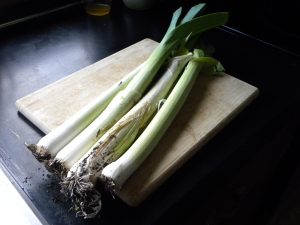
Last Leeks of the Year
I made one foray down to the garden to harvest the last of the leeks. They were wonderfully sweet and delicious after all the freezing weather we’ve had.
Inside
I caught up on some of this season’s harvest processing – cleaning up our dried beans, and canning the frozen strawberries.
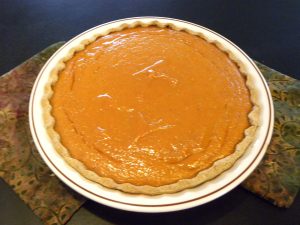
Seminole Pumpkin Pie
Pie making continues. The winter squash are holding up well, despite the many gnaw marks on them. When they do start to show signs of rotting, we move them along as human or goat food. Very little has gone to waste.
I also spent time on the computer, planning 2019 programming for Seacoast Permaculture, True Tales Live, and NH Peace Action, and catching up on correspondence, reading and writing.
Off-farm
Over the past decade a number of deaths reduced my family commitments. Some of those family events were admittedly more stressful than fun, but somehow I still miss them this time of the year. So, it was worth it to venture out into the crowds of holiday-stressed people for a few meaningful programs. I was part of a True Tales Holiday Live broadcast, a NHPA sponsored showing of The Christmas Truce, I drummed for a Solstice Service at Portsmouth’s South Church, and I held my annual Winter Solstice Sacred Circle Dance. This is my “social permaculture” work – creating connections and building resilience in the human ecosystem.
December’s Harvest
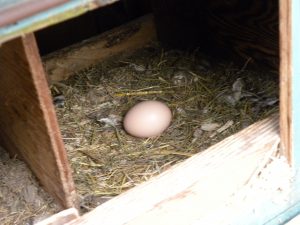
Chickens Laying Again!
We brought in 5# of leeks, 16 chicken eggs, and 5.3 gallons of milk.
We collected three 5-gallon buckets of seaweed to feed to the animals. While at the ocean, we also brought home a 5-gallon bucket of sea water which became our first pint of homemade, wood stove dehydrated salt of the winter.
We made 165 kwh from the PV solar panels. There were more sunny days in December, but the sun is just so low and quick to leave the sky it couldn’t produce much.
Stored food that we relied on: winter squash, carrots, beets, parsnips, potatoes, garlic, honey, canned peaches, blueberries and strawberries, dried kale, summer squash, nettles, beans and peaches. In the freezer we have: eggplant, broccoli, string beans, salsa, pesto, cheese, various kinds of berries, chicken, duck and goat meat.
Looking Ahead
A year ago I committed to posting twelve monthly reports of work and harvest totals and this is the twelfth! I hope that it has been interesting and helpful for those of you reading to get a better idea of what it means when we tell you we are “homesteading.”
For this coming year, I plan to keep up with monthly entries, but on more varied topics (I welcome your suggestions!). I do have a plan for my next one – a summary of 2018 harvests, including reflecting on successes and failures. This will help me as I put in orders for seeds, seed potatoes, trees, and bees over the next few weeks.
Until then, Happy New Year! I hope 2019 brings us all good health and harvests, continued learning, and satisfying work building healthier communities.

